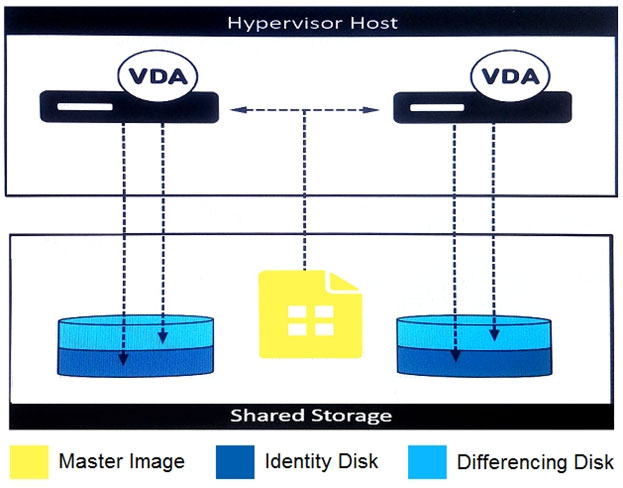Scenario: A Citrix Architect is redesigning a Citrix Virtual Apps and Desktops environment to include Machine Creation Services (MCS). During design discussions, the locations for the MCS-provisioned thin clone machine disks are proposed as shown in the exhibit.
Click the Exhibit button to view the details.

Which two potential issues should the architect address with the customer before proceeding with this configuration? (Choose two.)